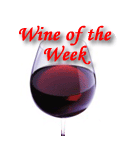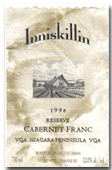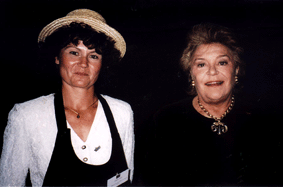|
Recent Articles |
|
||
|
What’s
Up D’Oc?
It’s true
that this region hasn’t had the highest of reputations having focused on cheap
bulk table wines in the past. But that’s changing rapidly. Better grapes and
modernization have resulted in new wines that are well worth searching out. Best
of all are the great drinking values to be found. Becoming
familiar with the many sub regions within this huge area is no simple task. In
addition, there are more than 350 cooperatives which account for two-thirds of
all the wine made from some 30,000 grape growers. Borders tend to be blurred and brand names seem to
predominate. One of the
more successful players has been Hugues
& Bernard Jeanjean. Founded
in 1870, Jeanjean began as a family wine merchant business, located in the heart
of the vineyards. Over five
generations, the company has become one of the leading merchant-producers in the
Languedoc Roussillon ~ the 8th largest in terms of volume in France. The
commitment to higher quality wines required a massive investment.
There are a bewildering number of wines produced by this single company ~
more than a dozen individual groupings of labels.
Perhaps best known is Arabesque,
a Vins de Pays d'Oc that comes in a unique wavy undulating bottle.
Well almost, at least in most provinces.
Unfortunately here in Ontario, the LCBO has for reasons unknown insisted
on ordering some of the regular shaped bottles.
This and the
delicious, well-priced 2000
Syrah Rouge
(not yet listed – about $8.95) can be tasted at the upcoming Fair.
In order to raise quality, Jeanjean recently installed 1,200 new barrels
in their St. Félix temperature (14°) and humidity (90%) controlled site for
the ageing of AOC and varietal wines. In addition
to the 26 chateaux and estates, last year Jeanjean took over Domaine Roque a 64-hectare estate in Caussiniojouls (Faugères).
Jeanjean also sells estate-bottled wines from 35 producers under the
"Vignerons et Passions en Languedoc-Roussillon" banner.
Finally,
there’s Jeanjean’s Arabesque
2002 “Primeur” Syrah, which has been a consistently good buy (now
in its third year) will be featured at the upcoming LCBO’s annual Nouveau
release ($8.80) on November 15th. To get the scoop, contact the agent
Eurovintage
at 416-494-2881. Moving on to
new heights of quality is the just-released red 1988
Baron’arques, which is now available from the agent Philippe
Dandurand at 416-368-3344
on consignment basis at $46.35 (6 bottle case).
Now it’s not everyday that you find a red Vins de Pays (VdP) de la
Haute Vallée de l’Aude at this price. In
fact, this first release is the result of a 1998 meeting between Baroness
Philippine de Rothschild owner of Chateau
Mouton Rothschild and Pierre
Mire, chairman of the Limoux-based Vignerons
du Sieur d’Arques. The
Baroness and her winemaker Patrick
Léon were impressed with the possibility of producing a red that
combined the finesse of the Atlantique (i.e. Bordeaux) and the fleshy suppleness
of the Mediterranean. This first
release **/**+ effort has both. Limoux is
small town and appellation in the western reaches of the Languedoc in the
Pyrenean foothills. The Vignerons
du Sieur d’Arques is a dynamic local cooperative which produces a wide range
of wines, from the traditional sparkling Crémant
and Blanquette de Limoux to cutting
edge barrel-fermented Chardonnays. The
Vignerons du Sieur d’Arques also produces the justifiably famous 100%
barrel-fermented Chardonnay Toques
et Clochers, which has been reviewed (and recommended) here before -
see my National Post article of June 24, 2000 (Click
Here). Limoux,
whose cork-stoppered sparklers go back to 1531, is one of the Languedoc regions
closest to Bordeaux. It has four designated climates, which vary from Atlantique
at the higher altitudes (wetter with a longer growing season) to Mediterranean
(hotter and drier). The former
focuses on the Bordeaux varieties, especially Merlot (34%), Cabernet Sauvignon
(14%) and Cabernet Franc (12%), while the latter brings on Grenache
(22%), Syrah (13%) and Malbec (5%).
This formula, however, isn’t fixed.
By 2000 the Mediterranean grape component fell from 40% to 23%, the
biggest decrease being in Grenache from 22% to only 3%.
Atlantique varieties rose from 60% to 77%.
Some 50,000 bottles of this first 1998 red were produced from 15 selected growers whose 40 ha of vineyards are spread among the four designated Limoux regions. If nothing else, the upcoming Vin de Pays d'Oc fair will allow one to taste what might well become the finest red of southern France. ------------------
|
|||
|
Copyright Food & Beverage Testing Institute of Canada
2004 |



 The
The
 And
how do they rate?
And
how do they rate? In
1998, Jeanjean purchased two additional properties.
In
1998, Jeanjean purchased two additional properties. On
Sunday, October 28, 2001, the wines from "Les Clochers" were put up
for auction at the Saint-Enfant-Jésus Church.
On
Sunday, October 28, 2001, the wines from "Les Clochers" were put up
for auction at the Saint-Enfant-Jésus Church. The
pre-auction tasting of four of the regional terroir designations of the 2000
vintage suggested that it should prove to be a very good year.
The
pre-auction tasting of four of the regional terroir designations of the 2000
vintage suggested that it should prove to be a very good year.